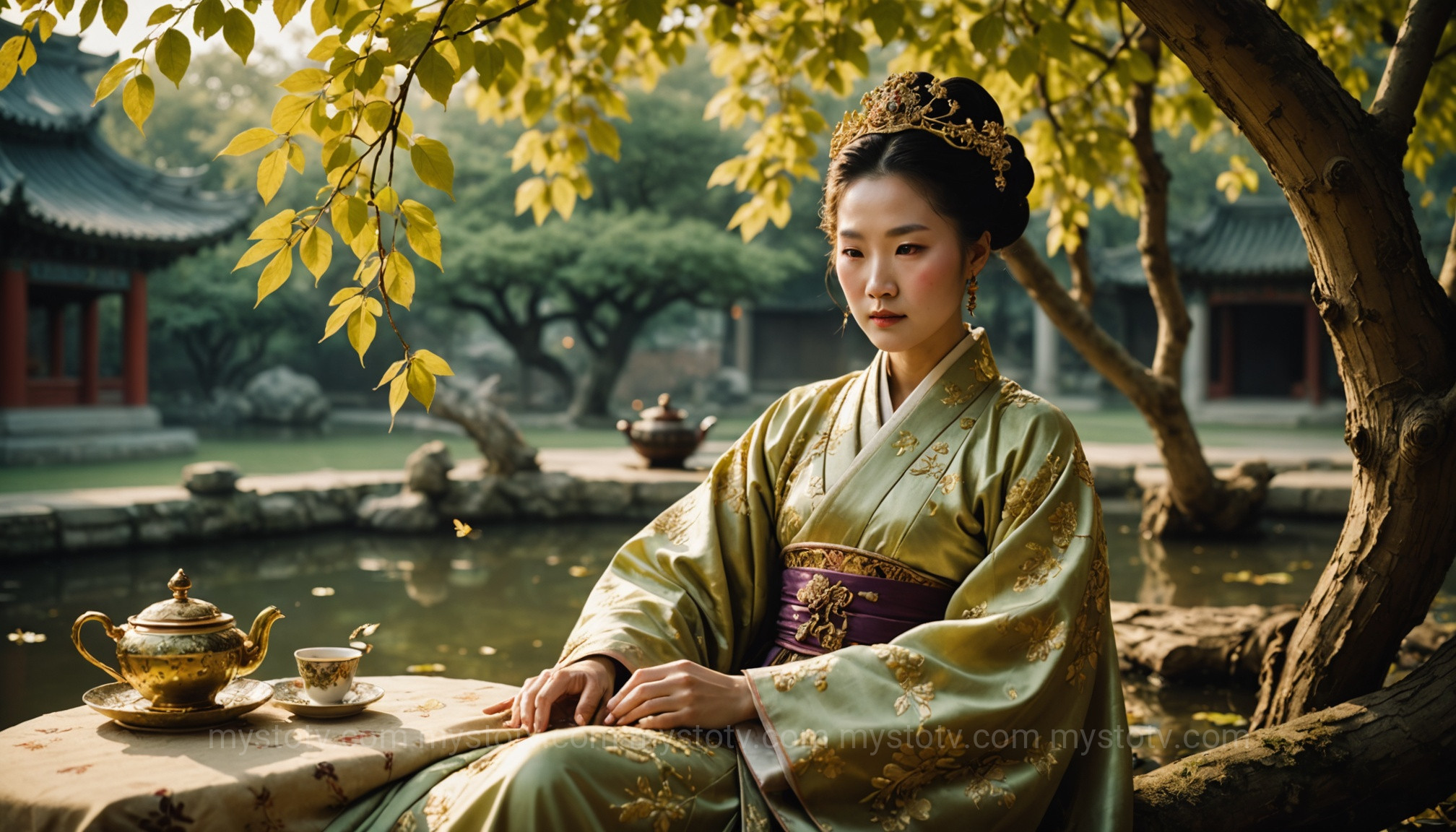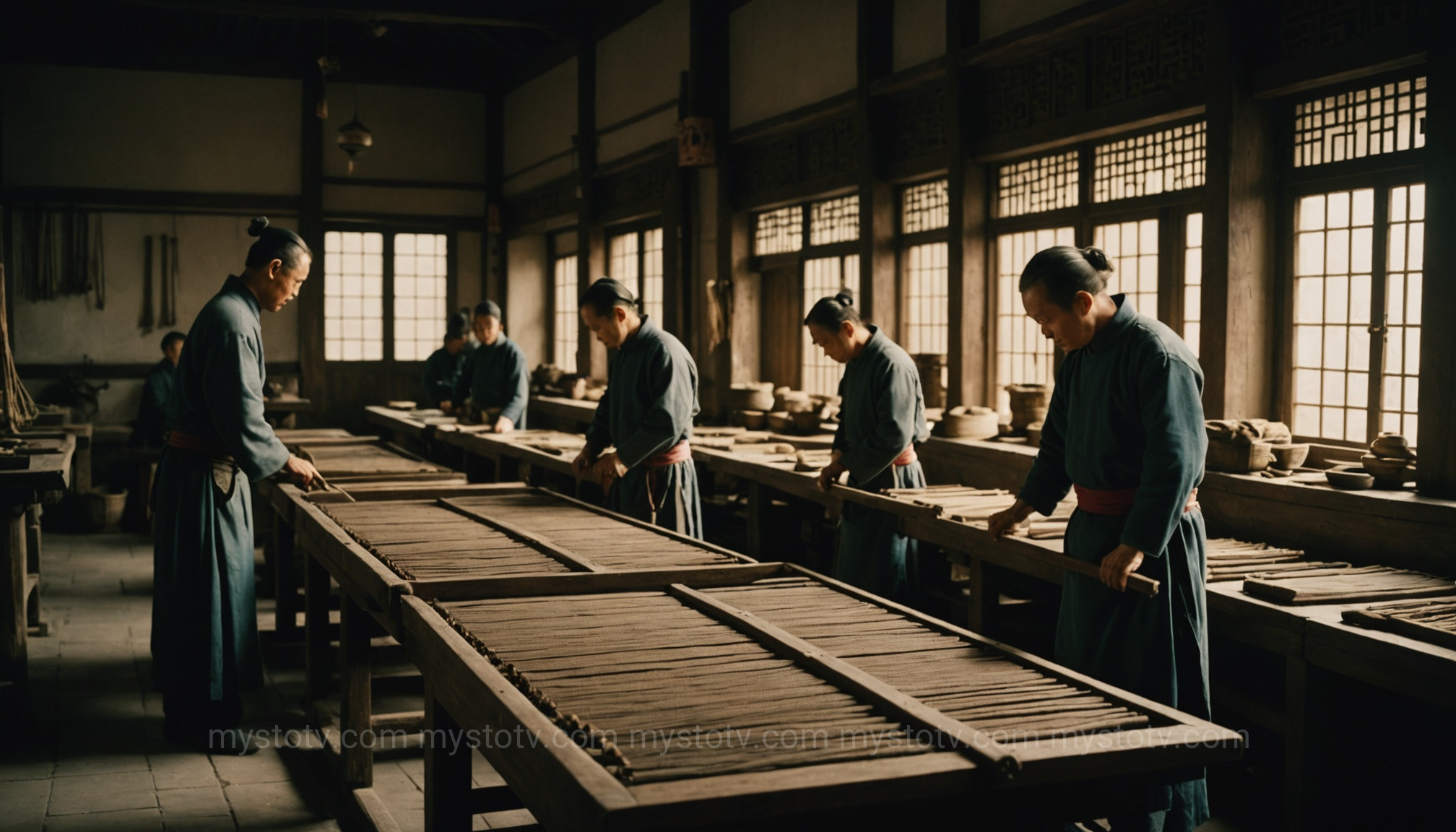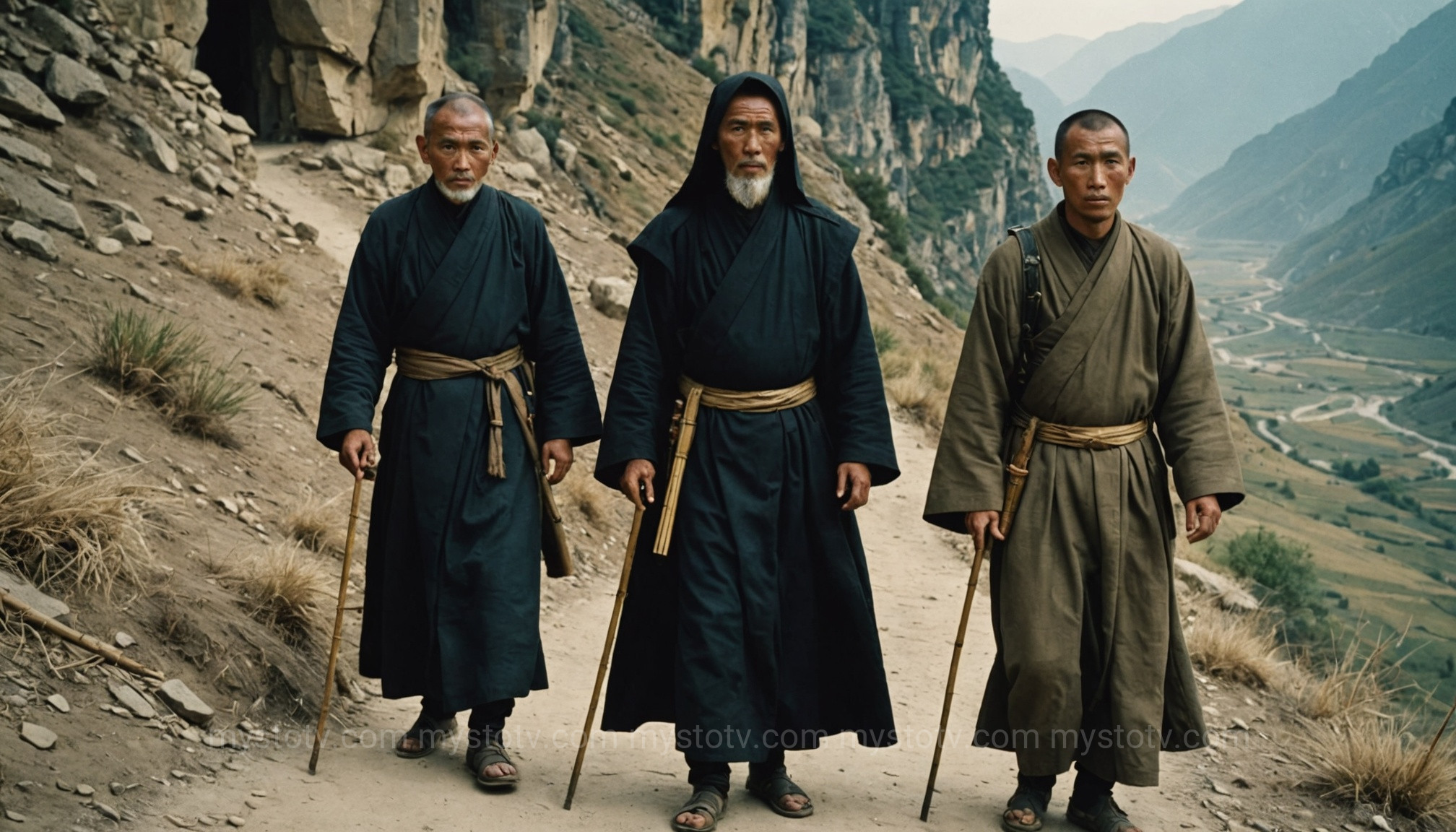I still remember the first time I held a real silk scarf. It wasn't a cheap polyester imitation, but a vintage piece my grandmother owned, brought back from a trip decades ago. The fabric felt impossibly light yet substantial, cool to the touch, and it shimmered with a life of its own. It felt less like a textile and more like captured moonlight. That tactile experience sparked a deep curiosity. How could something so exquisite come from a worm? This question sent me down a fascinating rabbit hole into the history of silk production, a story far more dramatic and consequential than I ever imagined. It’s a tale of empresses, spies, guarded secrets, and an ancient empire that used a single thread to weave its influence across the globe, shaping the course of human civilization in the process.
Contents
- 1 The Mythical Origins: Unraveling the History of Silk Production in Ancient China
- 2 A Secret Worth Guarding: The Geopolitics in the History of Silk Production
- 3 The Silk Road: How the History of Silk Production Forged Global Connections
- 4 The Unraveling of a Monopoly: The Global Spread of the History of Silk Production
- 5 The Legacy Woven in Time: Modern Echoes in the History of Silk Production
- 6 Frequently Asked Questions about the History of Silk Production
- 7 References
The Mythical Origins: Unraveling the History of Silk Production in Ancient China

The story of silk begins not with a historical record, but with a legend that is as beautiful as the fabric itself. It is a testament to how deeply intertwined the origins of this material are with Chinese culture and identity, forming the very first chapter in the long history of silk production.
The Legend of Empress Leizu and the Silkworm
According to Chinese lore, the discovery of silk dates back to the 27th century BCE. The Empress Leizu, wife of the mythical Yellow Emperor, was enjoying tea in her imperial garden beneath a mulberry tree. A cocoon from the tree accidentally dropped into her hot tea. As she fished it out, she was astonished to see a fine, incredibly strong thread begin to unravel from the softened cocoon. Intrigued, she gathered more cocoons and, through experimentation, learned to unwind this single, continuous filament. She then persuaded her husband to grant her a grove of mulberry trees, where she could cultivate the worms that produced these magical cocoons. Legend credits her not only with discovering the secret of silk but also with inventing the silk loom to weave the threads into fabric.
From Legend to Industry: The Early Domestication of Sericulture
While the tale of Empress Leizu provides a romantic origin, archaeological evidence supports China as the cradle of sericulture. Fragments of primitive looms and silk fabric have been discovered at Neolithic sites dating back to 3600 BCE. The key to this industry was the domestication of the silkworm, Bombyx mori. This moth, in its larval stage, feasts exclusively on the leaves of the white mulberry tree. Through centuries of selective breeding, the Chinese cultivated a species that was blind, flightless, and perfectly suited for producing a long, pure white, and smooth filament, far superior to that of its wild cousins. This meticulous process of raising silkworms for raw silk production, known as sericulture, became a highly sophisticated and vital part of China's agricultural economy.
Analysis: The legend of Empress Leizu serves a critical purpose beyond being a simple folk tale. It canonizes silk, elevating it from a mere commodity to a divine discovery sanctioned by royalty. This narrative ingrained the value of sericulture deep within the Chinese cultural psyche, framing it as a national treasure and a symbol of civilization itself. This cultural reverence was the foundation upon which China built its economic monopoly, making the protection of its secrets a matter of national and almost religious importance.
A Secret Worth Guarding: The Geopolitics in the History of Silk Production

For nearly three millennia, China maintained a complete monopoly on silk. The methods of its cultivation and weaving were the most closely guarded secrets in the ancient world. This was not merely a matter of commercial advantage; it was an instrument of state power that profoundly shaped the history of silk production and China's relationship with the rest of the world.
Imperial Decree: The Death Penalty for Smugglers
The Chinese government went to extraordinary lengths to protect its silk secret. Imperial law decreed that anyone caught smuggling silkworm eggs, mulberry seeds, or knowledge of sericulture out of the empire would be put to death. This was not an idle threat. Checkpoints were established along trade routes, and travelers were meticulously searched. The secret was confined within China's borders by an iron-fisted policy, making silk an enigmatic and almost mythical substance to the outside world.
Silk as a Currency: More Valuable Than Gold
Within China, silk was more than just clothing. Bolts of raw silk were used as a form of currency. Civil servants and military officers were often paid their salaries in silk. It was used to pay taxes and trade for goods like horses and jade. Externally, its value was astronomical. In the Roman Empire, silk was literally worth its weight in gold. This immense value gave China incredible economic leverage. It could drain the treasuries of rival empires, fund its vast armies, and finance massive public works projects like the Great Wall, all with a thread produced by a humble worm.
Weaving a Diplomatic Web: Silk in Ancient Chinese Statecraft
Beyond its economic might, silk was a powerful diplomatic tool. Chinese emperors used gifts of luxurious silk fabrics to appease aggressive nomadic tribes on their borders, turning potential enemies into vassals. It was bestowed upon foreign envoys and rulers as a sign of supreme imperial favor, a soft but potent form of power projection. Possessing Chinese silk became a status symbol for elites from Persia to the Mediterranean, creating a web of dependency and desire that centered on the Chinese court.
Analysis: The secrecy surrounding silk production was a deliberate and highly effective geopolitical strategy. By transforming a biological process into a state secret, China created an unparalleled monopoly that fueled its economy and diplomacy for centuries. The control over silk was a control over wealth, status, and power. This strategy demonstrates an early and sophisticated understanding of how technological advantage can be weaponized to maintain political dominance on a global scale.
The Silk Road: How the History of Silk Production Forged Global Connections

The insatiable foreign demand for a fabric whose origin was a mystery gave rise to one of the most important networks in human history: the Silk Road. This was not a single road but a sprawling network of trade routes connecting the East and West for over 1,500 years. The story of this network is inseparable from the history of silk production.
The Arteries of an Empire: Caravans Across Continents
Beginning in the Han Dynasty (206 BCE - 220 CE), caravans laden with silk began their perilous 4,000-mile journey from ancient Chinese capitals like Chang'an. They traversed some of the world's most forbidding terrains—the Taklamakan Desert, the Pamir Mountains—braving bandits, harsh weather, and political instability. The journey was long and segmented, with goods passing through the hands of many middlemen, such as the Sogdians and Parthians, each adding to the price before the precious cargo finally reached the markets of the Levant and, ultimately, Rome.
A Two-Way Street: The Exchange of Goods, Ideas, and Cultures
While silk was the primary commodity flowing west, the Silk Road was a conduit for much more. In return for its coveted fabric, China received gold, silver, horses, wool, glass, and wine. But the most transformative exchanges were cultural. Buddhism traveled from India into China along these routes. Nestorian Christianity and later Islam also spread. Technologies like papermaking and gunpowder eventually moved from China to the West, while artistic styles, musical instruments, and scientific knowledge flowed in both directions. The road built by the demand for silk became a bridge for humanity. This exchange was only possible because of the immense value of the closely guarded secret of its creation.
The Roman Obsession: A Drain on the Imperial Coffers
In Rome, silk was an instant sensation. The wealthy elite, both men and women, were captivated by its lightness and luster. The moralist Seneca the Younger complained about "garments that show everything," and the Emperor Tiberius even tried to ban men from wearing silk. Despite these objections, the demand was unstoppable. Pliny the Elder lamented the massive outflow of Roman currency—an estimated 100 million sesterces per year—to India, Arabia, and China to pay for luxury goods, with silk being the chief culprit. This trade imbalance put significant economic strain on the Roman Empire.
Analysis: The Silk Road demonstrates that a single product can fundamentally reshape the world. It was the engine of the first wave of true globalization, breaking down the isolation of great civilizations. The routes forced empires to interact, fostering not just trade but also conflict, dialogue, and synthesis. The entire network, with its profound impact on economics, culture, and religion, existed because of China's ability to produce one thing no one else could. It is the most powerful example of how the history of silk production wove a new global tapestry.
The Unraveling of a Monopoly: The Global Spread of the History of Silk Production

No secret, no matter how fiercely guarded, can be kept forever. The eventual spread of sericulture technology marks a pivotal turning point in the history of silk production, ending China's long-held monopoly and decentralizing the industry across the Old World.
The Tale of the Smuggling Monks
The most famous story of industrial espionage from the ancient world centers on the Byzantine Empire. Around 552 CE, the Emperor Justinian I, tired of paying exorbitant prices to Persian merchants for Chinese silk, dispatched two Nestorian monks on a mission. The monks had traveled to China and learned the intricate secrets of sericulture. According to the historian Procopius, they returned to Constantinople with the priceless means of production—silkworm eggs—hidden inside their hollow bamboo walking staffs. This single act of smuggling broke China's 3,000-year-old monopoly.
The Byzantine Empire's Silk Industry
With the smuggled eggs and knowledge, the Byzantines established their own thriving silk industry. Imperial workshops were set up in Constantinople, producing luxurious silks, often dyed Tyrian purple, for the exclusive use of the court and the church. For several centuries, the Byzantine Empire became the primary producer of silk for Europe, creating its own powerful monopoly and reducing its dependence on the eastern trade routes.
The Rise of Sericulture in Persia, India, and Europe
Even before the Byzantine success, the secret had begun to leak out. Sometime in the 5th century CE, a Chinese princess is said to have smuggled silkworm eggs to the Kingdom of Khotan (in modern-day Xinjiang) by hiding them in her elaborate headdress. From there, knowledge of sericulture gradually spread to India and Persia, both of which developed their own unique silk-weaving traditions. Following the Arab conquests in the 7th and 8th centuries, sericulture was introduced to Sicily and Spain. From there, it spread to Italy during the Crusades, with cities like Lucca, Venice, and Florence becoming major centers of silk production during the Renaissance.
Analysis: The unraveling of China's secret illustrates the powerful and inevitable force of technological diffusion. While the monopoly gave China immense power for a time, its end shifted global economic and cultural dynamics. New centers of power and artistry emerged, from Byzantine imperial workshops to the guilds of Renaissance Italy. This decentralization did not erase China's legacy; instead, it confirmed the universal appeal and transformative power of the technology it had nurtured for millennia. The global spread ensured silk's story would continue in new lands with new interpretations.
The Legacy Woven in Time: Modern Echoes in the History of Silk Production
The golden age of the Silk Road may be over, but the thread of silk's influence runs unbroken to the present day. The ancient history of silk production continues to cast a long shadow, influencing modern economies, fashion, and even geopolitics.
From Imperial Looms to Industrial Machines
The Industrial Revolution transformed silk production, introducing mechanical looms like the Jacquard loom, which could create incredibly complex patterns with unprecedented speed. This moved silk from the realm of pure luxury to a more accessible, though still high-end, material. Today, while machines handle much of the weaving, the fundamental process of sericulture—raising Bombyx mori on mulberry leaves—has remained remarkably unchanged for thousands of years. The finest silk still requires meticulous human care and attention.
Silk's Enduring Symbolism in Fashion and Art
Silk has never lost its association with luxury, elegance, and sophistication. From the high-fashion runways of Paris and Milan to the traditional kimonos of Japan and saris of India, silk remains a premier textile. It is a canvas for artists and a symbol of status. Its qualities—its sheen, drape, and strength—make it unparalleled for certain applications, ensuring its place in the world of haute couture and fine furnishings.
China's Resurgence as a Global Silk Power
After centuries of its industry being eclipsed by others, China has re-emerged as the world's dominant silk producer, accounting for the vast majority of global raw silk output. This modern dominance is a direct echo of its ancient monopoly. Furthermore, China's ambitious "Belt and Road Initiative," a massive infrastructure project aimed at recreating the old trade routes, explicitly invokes the legacy of the historic Silk Road. It is a clear statement that the ancient strategy of using economic connectivity to project influence is once again at the heart of China's global vision.
Analysis: The modern story of silk is one of continuity and resurgence. The material's enduring appeal shows how deeply its qualities are valued by humanity. China's return to the top of the silk market and its strategic invocation of the Silk Road legacy reveal that the historical patterns of power and trade associated with silk are not merely relics of the past. They are active templates being used to shape the geopolitical landscape of the 21st century, proving that the threads woven in antiquity are still shaping our world today.
Frequently Asked Questions about the History of Silk Production
Here are answers to a few common questions that arise when exploring the fascinating history of this unique textile.
What exactly is a silkworm?
The "silkworm" isn't actually a worm, but the larval stage (caterpillar) of the silk moth, Bombyx mori. It spends its brief life—about 25 to 28 days—voraciously eating mulberry leaves. Once it has grown large enough, it spins a protective cocoon around itself using a single, continuous filament of raw silk produced from its salivary glands. It is this filament that is harvested for silk production.
How is silk made from the cocoon?
To preserve the single long thread, the cocoons are typically boiled or steamed. This kills the pupa inside (preventing it from breaking the filament as it emerges as a moth) and loosens the sericin, the gummy substance that holds the cocoon together. Workers then find the end of the filament and carefully unwind the cocoon. The threads from several cocoons are combined to create a single silk thread strong enough for weaving.
Why was silk so important in ancient China?
Beyond its beauty and comfort, silk was economically and strategically vital. It was lightweight and high-value, making it the perfect export commodity for long-distance trade. It functioned as a stable currency for paying soldiers and officials. Diplomatically, it was used as a prestigious gift to forge alliances and pacify nomadic tribes. This combination of economic, military, and diplomatic utility made it a cornerstone of Chinese state power for millennia.
References
- Kuhn, Dieter. The Age of Confucian Rule: The Song Transformation of China. The Belknap Press of Harvard University Press, 2009.
- Liu, Xinru. The Silk Road in World History. Oxford University Press, 2010.
- The Metropolitan Museum of Art. "Silk Road". In Heilbrunn Timeline of Art History. https://www.metmuseum.org/toah/hd/silk/hd_silk.htm
- Hansen, Valerie. The Silk Road: A New History. Oxford University Press, 2012. https://www.amazon.com/Silk-Road-New-History/dp/0190218428
The history of silk production is more than just the story of a beautiful fabric; it's a grand narrative of human ingenuity, imperial ambition, and global connection. From its mythical origins in an empress’s teacup, this single, shimmering thread was transformed into the world's most coveted secret. For thousands of years, China leveraged this secret to build an empire, control trade, and project its power across continents, initiating the first great age of globalization along the Silk Road. Though the secret eventually unraveled and spread across the world, the legacy of silk endures. It reminds us that sometimes the most delicate threads are the ones that weave the most powerful and lasting tapestry of history.